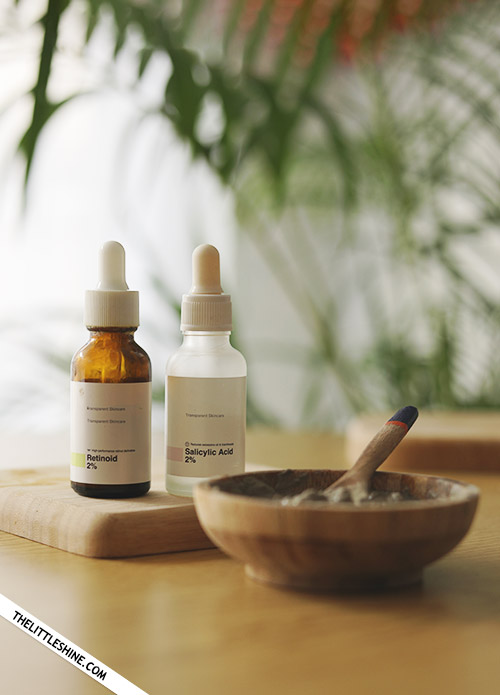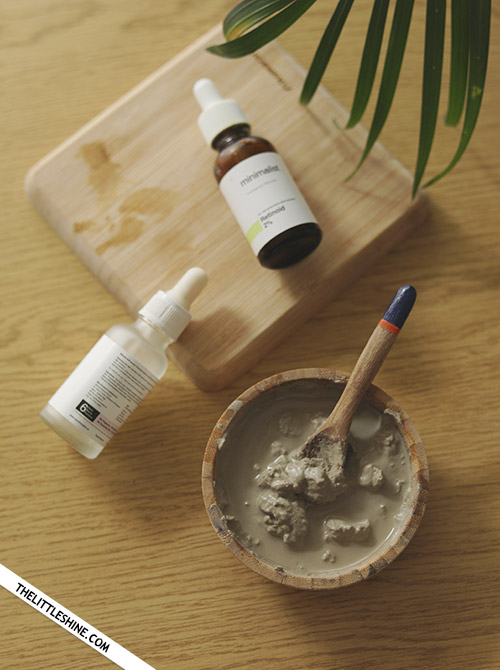Most of us face this problem of blackheads, especially on the nose, very often. Blackheads are nothing but the black coloured bumps or spots we see on our skin which occurs when the hair follicle gets clogged with dirt or grime, dead skin or even excess oil. When the skin on the bump opens up, it causes exposure to air, undergoes a chemical reaction and forms a blackhead. It is a mild form of acne.

Very often confused: Blackheads and Whiteheads
It is important to know about comedones, when talking about blackheads and whiteheads. For those of you who don’t know what comedones are, they are small skin-coloured bumps which form on the skin. Open comedones are called blackheads (meaning explained in the introduction) and closed comedones are called whiteheads (when dead skin, oil and bacteria get clogged within one of your open pores. Air isn’t able to enter into the hair follicle/open pore and therefore there is no chemical reaction and it remains white in colour), which is also another form of mild acne, just like blackheads.
Here are some ways you can use to get rid of blackheads:
Cleansing Oil:
Cleansing oil is a common addition to people’s skin care routines. It is commonly used to remove make up, dirt and excess sebum (the oily waxy substance produced by the sebaceous gland on the skin), while keeping your natural skin intact.
To use – You could use cleansing oil on your dry face. The oil can slowly seep into your pores and surround the dirt and grime. After sometime you can gently massage your face in rolling motions with wet hands. Oil being lighter than water will be able to be moved up to the surface and get dissolved. If you had makeup on, take off your makeup before applying the cleansing oil. You can also use cleansing oil and massage gently using a cleansing puff or mix it with an exfoliation scrub.
BHA / Salicylic Acid:
Salicylic acid is a bitter compound which is present in certain plants. It has various uses including the treatment of acne. It is helpful in breaking down the particles which clog the pores, be it dirt, grime, excess sebum/oil or even dead skin, helping the skin get exfoliated. It is anti-inflammatory by nature and can reduce acne.
To use – Apply salicylic acid twice a week on clean face. Follow up with a good moisturizer.
Retinol:
Retinol is a form of vitamin A (a vitamin which can help reduce acne). Retinol can help boost collagen (the protein essential for healthy joints and skin and is known to be one of the most produced proteins in the human body) production, by penetrating deep into the epidermis (protective outer layer of the skin) to the dermis (middle layer of the skin). Retinol is a common skincare ingredient and can be found in many over the counter skincare products.
To use – Use retinol 3 times a week to prevent blackheads, unclog pores and promote healthy skin.

Clay Mask:
Clay masks have been around since ages as an active skin care ingredient, as it is helpful to detoxify the skin and cleanse the pores. The mineral content in clay masks is activated when water is added to it and can have a cooling effect on the skin, exfoliate the impurities (like dead skin, dirt and grime) from the skin and reduce the excess oil from the skin, therefore being used more often by people with oil skin as it can remove the excess moisture from the skin, along with natural oils. Clay such as kaolin (mild absorption properties) or bentonite (stronger absorption properties), is usually used for clay masks. It can help reduce that excess shine from your face, as a result of oily skin. READ MORE – MOST POWERFUL FACE AND BODY MASK – fight acne, blackheads, and clear skin
To use – Mix clay with water to make a paste. Apply this as a face mask, leave it on for 10 mins and rinse off.
Activated Charcoal:
Activated Charcoal, also known as activated carbon, is purer than regular charcoal (please note that it is not the same) and is in general a useful product to keep at home. Activated charcoal is a form of carbon which has been processed to have small and low volume pores. This property helps incase the surface area available for adsorption (holding molecules or particles as a thin film, so the harmful chemicals can get trapped). It is commonly used for the treatment of acne and for the removal of blackheads as it helps to pull out the toxins from under the skin and bring it to the surface.
To use – Mix activated charcoal with water to make a paste. Apply this as a face mask, leave it on for 15 mins and rinse off.
Benzoyl Peroxide:
Benzoyl Peroxide is a white crystalline/granular solid which has a very faint odour and is commonly used as a beaching agent and in the treatment of acne. It can help kill bacteria and can reduce excess oil and dead skin which clog the pores and help reduce blackhead or whitehead formation. READ MORE – Vitamin C – a magic wand for clear, bright, and flawless skin
To use – Find face wash or cleanser with benzol peroxide.
Please Note: These are the general uses of the above ingredients and can work differently on different skin types. If it causes any irritation for your skin, please stop using it with immediate effect. You can also consult a medical professional, if you wish to, before using any of these blackhead removal agents. Do not overuse any of these methods of blackhead removal as there can be side effects.
